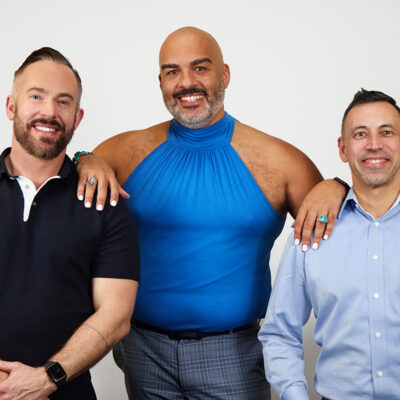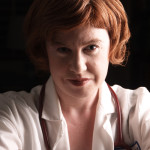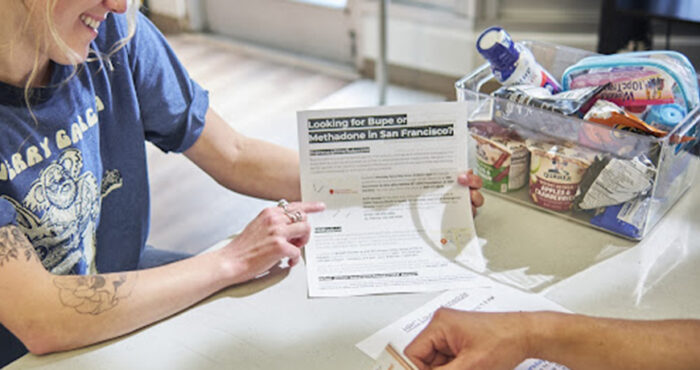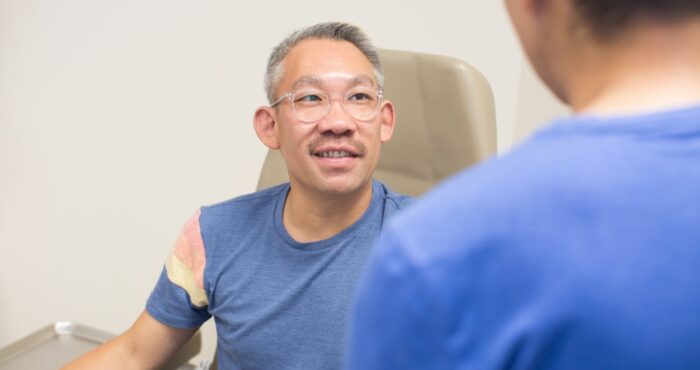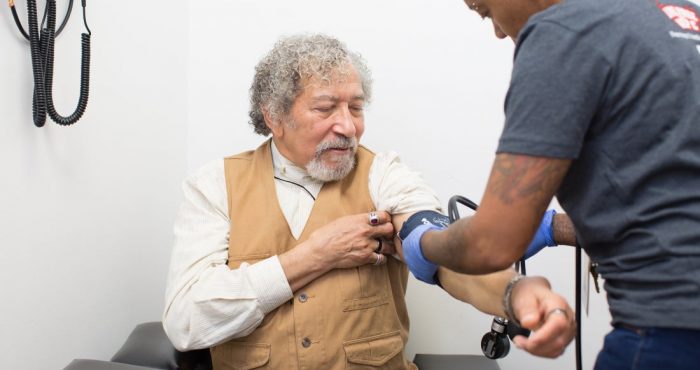Start—and continue—HIV meds as soon as you can
Sometimes, people who have just been diagnosed with HIV ask me when they need to start taking HIV medications. If you’re living with HIV, you probably have heard that it’s best to start antiretroviral therapy (ART) as soon as possible. Untreated HIV is more toxic to your body than HIV medications, so I always advise people to start HIV treatment right away.
But, some people may still be wary of starting HIV medication early on. They may not trust their provider or the federal agencies that make treatment recommendations. They may worry that the “medical establishment” is downplaying the toxicity of HIV medications in order for drug companies and unscrupulous doctors to make more money.
I’ve heard these concerns and know that as medical providers, we haven’t always done a good job in listening to our patients and addressing their concerns. People who have been historically disenfranchised by the health care system, such as African Americans, may be even more distrustful. And it’s true that there have been some doctors and researchers who were unethical and gave the rest of us a bad name. But I have read the research and know that the recommendation for people with HIV to start ART as soon as possible is based on good science, not greed. Here’s what we know.
Why wait?
For many years, the theory in HIV care was: “If it ain’t broke, don’t fix it.” Doctors based their decision on whether or not to prescribe ART on their patients’ CD4 cell counts (a measure of immune system health). If a person’s CD4 count was high enough that we thought the person wasn’t at risk of developing AIDS or a serious opportunistic infection, we advised the person to wait until their CD4 count dropped before starting HIV medications. We did this because we were taking into consideration the toxicity of HIV medications as we were weighing the costs and benefits of HIV treatment.
Three things happened in the last ten years to change the, “if it ain’t broke, don’t fix it” recommendation.
First, the treatment we had to offer people living with HIV got better and safer. Second, we learned that untreated HIV causes more damage to our body than previously thought. And third, we learned that we could prevent new HIV infections by helping everyone with HIV get on treatment and suppress their viral loads.
We’re going to talk about three major scientific studies that changed the way we think about when it’s best to start HIV treatment: the SMART study, the START study, and the HPTN 052 study. All three of these are big, international randomized controlled trials, which give us the most rigorous kind of evidence that we can collect. Interestingly, all three of these trials were stopped early, or their protocols were changed, because the preliminary results showed that one treatment option was clearly better than the other. Stopping a trial early doesn’t happen very often and usually indicates very conclusive findings.
The SMART Study ended the idea of drug “holidays”
The 2006 Strategies for Management of Anti-Retroviral Therapy (SMART) Study showed that going on and off of HIV medications—out of fear of drug toxicity or for other reasons—was detrimental to health. SMART enrolled 5,472 people with HIV who had CD4 counts greater than 350 across 33 countries. Half of the people in the study received continuous HIV therapy. The other half went on and off of HIV medications according to their CD4 count: stopping when CD4 counts went above 350 and re-initiating when CD4 counts fell below 250.
The continuous treatment group—the people who started and stayed on HIV medications—had much better health outcomes. They were less likely to get serious AIDS-related infections, and also had a lower risk of death due to non-HIV associated conditions like heart disease and cancer. The study was stopped in January, 2006 due to safety concerns for people randomized to receive intermittent therapy.
After finding out the results from SMART, we began to understand that untreated HIV causes inflammation which damages parts of the body outside of the immune system—things like our heart and other organs. SMART showed us that HIV is more toxic to the body, and causes more damage, than HIV medications.
The START Study showed it’s better not to wait
In 2015, we finally got a definitive answer to the question of when to start antiretrovirals when the Strategic Timing of Anti-Retroviral Treatment (START) Study results were released.
The START Study enrolled 4,685 people with HIV and CD4 counts over 500 across 35 countries. Half the people started HIV treatment immediately, and half delayed treatment until either their CD4 count went below 350 or they got an AIDS-related condition. People who started treatment early reduced their risk of developing a serious health event by 53%. This included both AIDS-related infections, like tuberculosis and Kaposi’s sarcoma, and non-HIV related conditions like cancer.
I remember being really surprised by the results of this trial because I didn’t think they would find this much of a benefit to early treatment in countries with well-developed health care systems like the U.S. I also didn’t predict we would see so many AIDS-related conditions in people with relatively high CD4 counts—which tells us that CD4 counts are not a very good predictor of immune system health.
The HPTN 052 Study showed the power of treatment as prevention
Another reason to think about starting treatment as soon as possible is so that you don’t have to worry about passing HIV on to anyone else. This is called “treatment as prevention.” The HPTN 052 study was conducted with 1,763 serodiscordant couples (i.e., one partner is HIV-positive and one partner is HIV-negative) across 13 sites in nine countries. Half of the people with HIV in the study started HIV therapy immediately, while the other half waited until their CD4 counts dropped below 250.
In 2011, early results from the HPTN 052 study convinced the safety committee overseeing the study to offer everyone with HIV in the study—regardless of CD4 count—HIV treatment. These early results from HPTN 052 showed that the risk of sexual transmission to the HIV-negative partner was reduced by 96% with early ART. More recently, final study results from HPTN 052 showed a 93% reduction in sexual HIV transmission with HIV treatment and no HIV infections documented when the HIV-positive partner was virally suppressed.
This was an important finding for public health, but also for people living with HIV. One of the most common questions I get asked by new patients is, “How do I keep from giving this to anyone else?”
Worrying about transmitting HIV is stressful and can put a serious damper on your sex life. While it’s still important to use condoms and for at-risk HIV negative folks to know about PrEP, studies show that if you have an undetectable viral load, it is unlikely that you will transmit HIV to anyone else.
Where CD4 counts fit in
Large cohort studies show that people with HIV who have higher CD4 counts have longer life expectancies. If you start treatment with a low CD4 count, it will probably increase gradually over time if your viral load stays undetectable. However, some people never see that much of a CD4 increase, and there may be some risk associated with a CD4 that stays less than 350. Starting HIV treatment early will help you keep your CD4 count high, so it’s better to start therapy early to keep your CD4 count from dropping.
Treat until we have a cure
One concern I hear from new patients is, “Once I start, I have to take this pill every day for the rest of my life.” I believe that we will see a cure for HIV in our lifetime. So I prefer to say, “Take this every day until we have a cure.”
When we do have a cure for HIV, make sure you’re here to see it. And, make sure you’re in a position to benefit from it, by keeping HIV as well suppressed as possible. Starting treatment really early decreases the size of the HIV “reservoir,” which is the amount of HIV virus hidden inside sleeping immune cells that we can’t get rid of with current HIV therapy. It’s likely that HIV cures will work better and more effectively on people with smaller HIV reservoirs.
Decide what’s right for you
As HIV treatment has gotten better, I’ve seen the bar for being “ready” to start treatment has gotten a lot lower. Most of my patients starting ART these days take once-daily, fixed-dose combination pills with very few side effects. Some can be taken either with or without food. Most ART combinations work really well even if you miss a pill once in a while (but it’s best if you don’t miss doses!).
If you have a routine, and can make time during your day to do things like brush your teeth or take a multivitamin, you’re going to do fine with HIV therapy. Even if you’re using substances, you can still take HIV medications. One recent study of people actively using methamphetamine found that a high percentage maintained undetectable HIV viral loads on treatment, which means that even if you’re using, you shouldn’t wait to start HIV therapy.
It may take some time to process and come to terms with an HIV diagnosis, but the sooner you begin to take steps to manage HIV, usually, the better you will feel about your diagnosis and how well you can live with HIV.
The big picture & final thoughts
I began my HIV practice in San Francisco in 2010, the same year the city began an ambitious “Test and Treat” program, recommending HIV medications for all HIV-positive people. At the time, I was skeptical of this strategy. I worried that it was a giveaway to the pharmaceutical industry, and that it might be beneficial for public health but not for individual patients. Now we know that San Francisco was on the right track, and the rest of the world is following suit.
Last year, San Francisco again pushed us forward in HIV treatment with the RAPID program, where newly diagnosed people are offered treatment on the day of diagnosis. This program has been well received by patients and shows faster viral suppression than with traditional treatment strategies.
It’s normal to worry about toxicity with any medication you are taking, whether that’s ibuprofen or antiretrovirals. However, HIV medicines are actually very safe, and there is nothing healthy about uncontrolled HIV replication in your body. HIV treatment will continue to get even better and easier, and eventually we’ll find a way to cure HIV altogether. In the meantime, find a provider you trust and if you’re not already on antiretrovirals, think seriously about starting HIV treatment.
Sources
Carrico, A. W. and others. Stimulant use and progression to AIDS or mortality after the initiation of highly active antiretroviral therapy. JAIDS, December 2014.
Chesney , M. Factors Affecting Adherence to Antiretroviral Therapy. Clinical Infectious Diseases, 2000.
Cohen, M. S. Prevention of HIV-1 Infection with Early Antiretroviral Therapy. The New England Journal of Medicine. August, 2011.
The Insight START Study Group. Initiation of Antiretroviral Therapy in Early Asymptomatic HIV Infection. The New England Journal of Medicine. August, 2015.
May, M. T., and others. Impact on life expectancy of HIV-1 positive individuals of CD4+cell count and viral load response to antiretroviral therapy. AIDS. May, 2014.
Siegel, L. and El-Sadr, W. New Perspectives in HIV Treatment Interruption: The SMART Study. PRN. 2006.
Rodger, A. and others. HIV transmission risk through condomless sex if HIV+ partner on suppressive ART: PARTNER study. 21st Conference on Retroviruses and Opportunistic Infections. Abstract 153LB. 2014.
Pilcher, C. and others. Providing same day, observed ART to newly diagnosed HIV+ outpatients is associated with improved virologic suppression. Eighth International AIDS Society Conference on HIV Pathogenesis, Treatment, and Prevention (IAS 2015). Abstract WEAD0105LB. 2015.
Ananworanich, J. and others. Early ART intervention restricts the seeding of the HIV reservoir in long-lived central memory CD4 T cells. 20th Conference on Retroviruses and Opportunistic Infections. Abstract 47. 2013.
—
San Francisco AIDS Foundation receives funding from corporate partners including those in the pharmaceutical industry. Editorial decisions on our blog and website are made independently. For more information about SFAF funding, please refer to our financial and tax documents.





